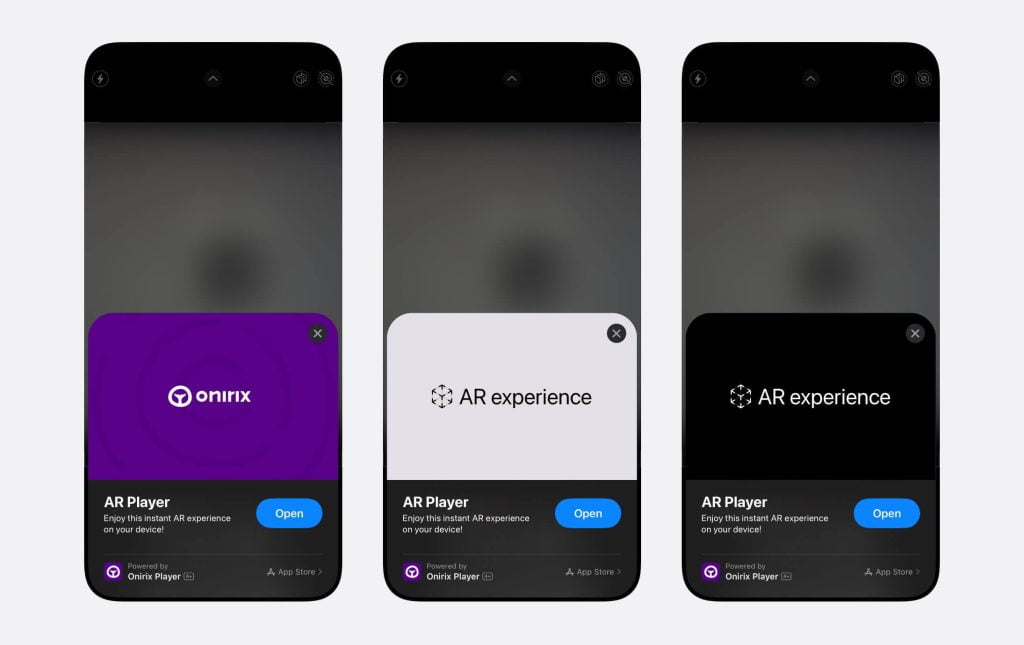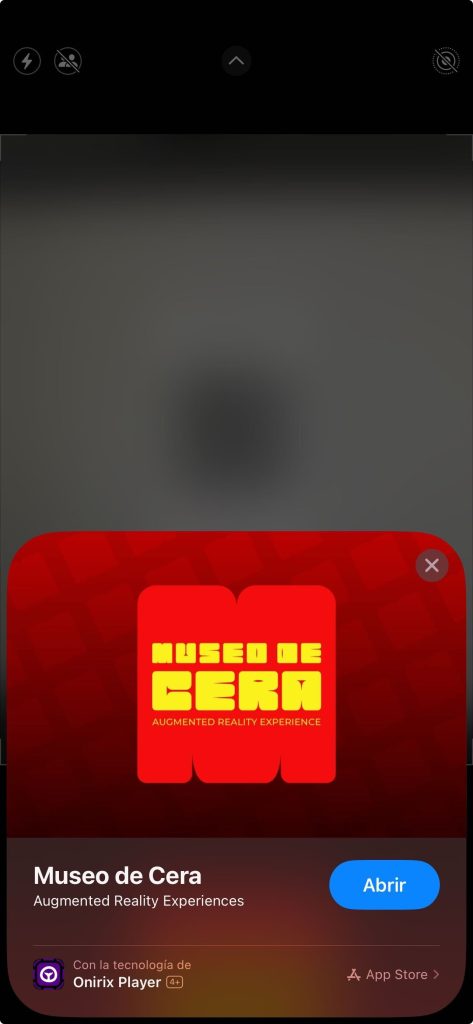Onirix Clip, the iOS alternative to WebXR for accurate AR tracking
Contents
Have you ever wondered when iOS will support WebXR?
We have. Many times, so many that we finally decided to develop our own solution: Onirix Clip.
Finally Apple users will be able to enjoy the best world tracking (SLAM) in augmented reality experiences without downloading heavy apps on their iPhones.
Viewing Web AR experiences in Onirix
There are two main ways to visualize augmented reality experiences for browsers in Onirix: WebAR Player and Onirix Clip.
Onirix WebAR Player allows you to open the main Android (Chrome) and iOS (Safari) web browsers to enjoy the experiences. This is the main opening mode for Android, as the Chrome browser has WebXR support.
Why is it so useful to have WebXR support?
Because it allows access to the capabilities of the operating system through ARCore, offering the most accurate tracking through Google’s own Chrome browser, Edge, Samsung Internet and other Chromium-based browsers.
And it would be the same for Safari if it had support for WebXR to access the operating system through ARKit. But we’ve been waiting so many years for that great news, that we finally developed our own solution: Onirix Clip.
Onirix Clip, the improved iOS tracking
Currently, the default iOS browser (Safari) does not support the WebXR API. However, you can use other browsers that have implemented it, such as Mozilla XR Viewer. And that was the first solution we gave to our customers who demanded more accurate iOS tracking.
But of course, asking a user that in order to enjoy an augmented reality experience on their iPhone they have to download a new browser is not exactly the best solution.
And that’s when we decided to develop Onirix Clip to access ARKit from web experiences.
In our technical documentation you can see in a purist way what this technology consists of. But to simplify its description, we could say that Onirix Clip is like our own browser that can run on the user’s device automatically. It has the advantage of offering an immediate (like Safari) and yet accurate (like an app) experience, but without having to force the user to go to your App Store to download an app.
Simply, from a QR code or a URL opened from Safari, Onirix Clip will open and the user can enjoy on iOS an enhanced augmented reality experience with very accurate tracking.
You can check the accuracy of Onirix Clip by copying in your browser the URL https://player.onirix.com/exp/eX9ADl or scanning the following QR:


As you can see, with Onirix Clip you can keep all the advantages of web experience development (immediacy, instant access, ease of code modification and changes on the fly, possibility to design experiences with HTML, CSS and JavaScript, etc.); plus access to sensors and OS libraries (ARKit), allowing tracking with the highest possible robustness.
Onirix Clip card
As you will have seen if you have used your iPhone to test the AR experience in the example, using Onirix Clip displays a card associated with the Clip like the first one in the following image.


Do you want to customize that card as shown in options 2 and 3 in the image above? You will be able to do so depending on the plan you sign up for.
Beyond the generic cards in the image above, it is also possible to customize the image and text of the card, as in the following real case of Museo de Cera.


Web AR wins the battle against apps
At Onirix we have always bet on augmented reality for browsers because it has many advantages, such as avoiding the barrier of installing apps or the possibility of embedding experiences in existing websites.
But it is true that the browser added an extra layer of complexity as it was not the operating system that directly managed the resources of your augmented reality experience, but the user’s browser through the operating system of their mobile device. This translated into approximately 30% performance loss compared to the same experience in a native app.
However, since 2018 when the Chrome browser implemented WebXR support, this one app vs WebAR advantage disappeared. Since then, the entire industry expected Safari to follow in Chrome’s footsteps.
Many in the XR worlds are wondering if Safari will ever support WebXR. The question we ask ourselves is when will it do so. But our customers were already demanding a solution from us, so we developed it on our own.
Onirix Clip was released in beta version on April 9th. Since June 3rd inclusive, the Onirix Clip version is fully functional and is already compatible with Spatial AR. Do you want to try it?

